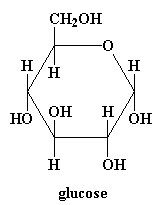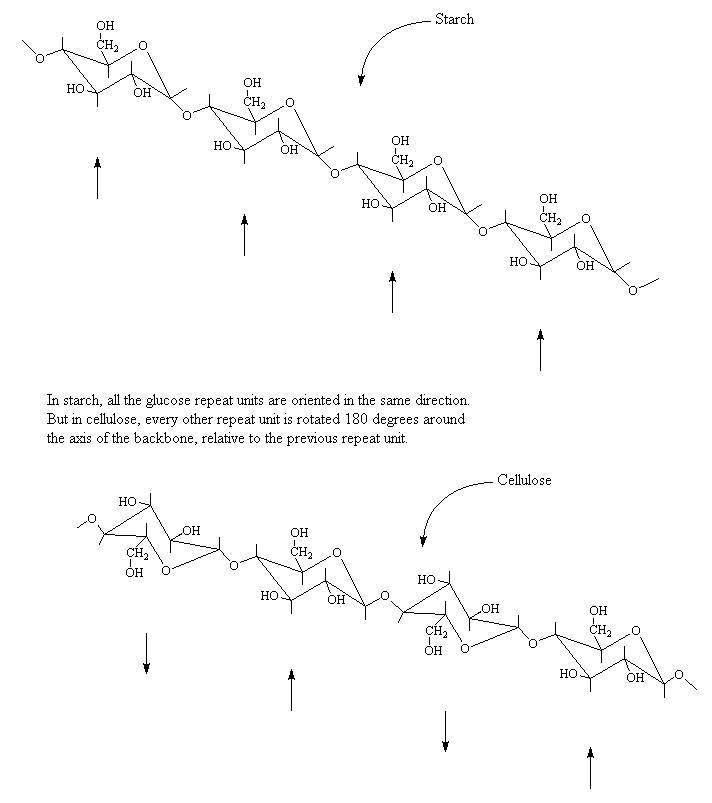
Starch and cellulose are two very similar polymers. In fact, they are both made from the same monomer, glucose, and have the same glucose-based repeat units.

There is only one difference. In starch, all the glucose repeat units are oriented in the same direction. But in cellulose, each succesive glucose unit is rotated 180 degrees around the axis of the polymer backbone chain, relative to the last repeat unit.

When bigshot scientists are talking bigshot scientist talk they say that the glucose units in starch are connected by alpha linkages, and that the glucose units in cellulose are connected by beta linkages.
Does this make any difference? It makes a lot of difference! The most important difference in the way the two polymers behave is this: You can eat starch, but you can't digest cellulose. Your body contains enzymes that break starch down into glucose to fuel your body. But we humans don't have enzymes that can break down cellulose. Some animals do, like termites, who eat wood, or cattle, who eat grass, and break down cellulose in their four-chambered stomachs. So unless you're a termite or a cow, don't try to nourish yourself on woodchips.
Cellulose is a lot stronger than starch. Starch is practically useless as a material, but celluose is strong enough to make fibers from, and hence rope, clothing, etc. Cellulose doesn't dissolve in water the way starch will, and doesn't break down as easily. Breaking down or dissolving in water just would be a little too inconvenient for something we use to make clothes. Not to mention, a good soaking rain would wash away all the wooden houses, park benches, and playground equipment if cellulose were soluble in water.

|
Go to the Starch Page |

|
Go to the Cellulose Page |

|
Return to Macrogalleria Directory |
